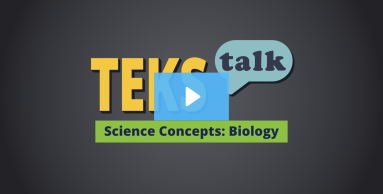
Knowledge and Skills Statement
The further explanation is designed to be a resource for educators that helps them better understand the topic their students are learning. Further explanations may be written at a more complex level than would be expected for students at the grade level.
Some 70% of the world's oxygen comes from the ocean—oceanic plants, plankton, and photosynthetic algae and bacteria. Many oceanic photosynthetic organisms are prokaryotic, so they will not have chloroplasts. Only 28% of the world's oxygen comes from terrestrial plants.
Research
Kim, Jinha, Cooper Williams, and Daniel Burt. "A Teaching Tool: Determining Rates of Cellular Respiration and Photosynthesis for Plant Species on Georgia College's Campus." Georgia Journal of Science 81, no. 1 (Winter 2023): 120. digitalcommons.gaacademy.org.
Summary: Students often have difficulty visualizing complex processes such as cellular respiration and photosynthesis, and this can significantly impact the students' understanding of the relationship between the two processes. Therefore, the goal of this project was to develop a teaching tool for undergraduate educators and students that: (i) provides a published data set for students to compare their own photosynthesis and/or cellular respiration data to, (ii) develops an excel calculator that can convert oxygen (O2) and carbon dioxide (CO2) measured in part per million (ppm) to units that are easier to grasp, and (iii) shows that not all plants have the same rate of photosynthesis.
Research
Jančaříková, Kateřina and Antonín Jančařík. "How to Teach Photosynthesis?: A Review of Academic Research." Sustainability 14, no. 20 (October 2022): 13529. https://doi.org/10.3390/su142013529
Summary: This study conducted a critical review of the topic of photosynthesis education, by examining 80 systematically selected articles through quantitative and qualitative approaches. Photosynthesis education is a key topic for the development of science literacy and serves as a model for how teachers can educate students on difficult and complex issues. Misconceptions adopted in childhood are powerful and often persist into adulthood (including teachers).
Research
Littlejohn, Patty. "Building Leaves and an Understanding of Photosynthesis." Science Scope 30, no. 8 (April/May 2007): 22-25.
Summary: Through the years, the most difficult concepts for my students to grasp have been photosynthesis and cellular respiration. To help students answer questions about cellular respiration, I have them build a model leaf, plant cell, and animal cell. This hands-on project allows students to see and manipulate the reactants and products of photosynthesis and cellular respiration.
